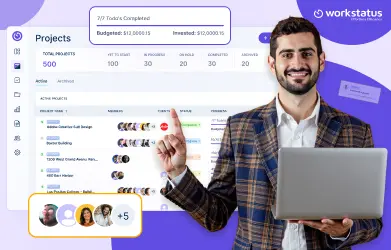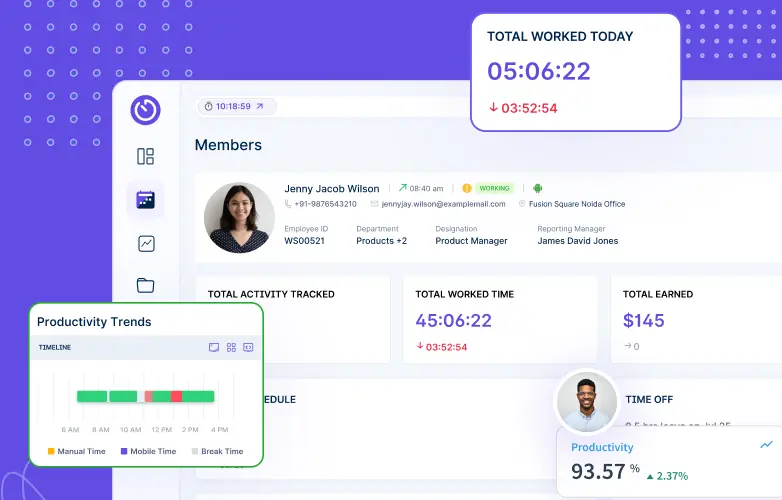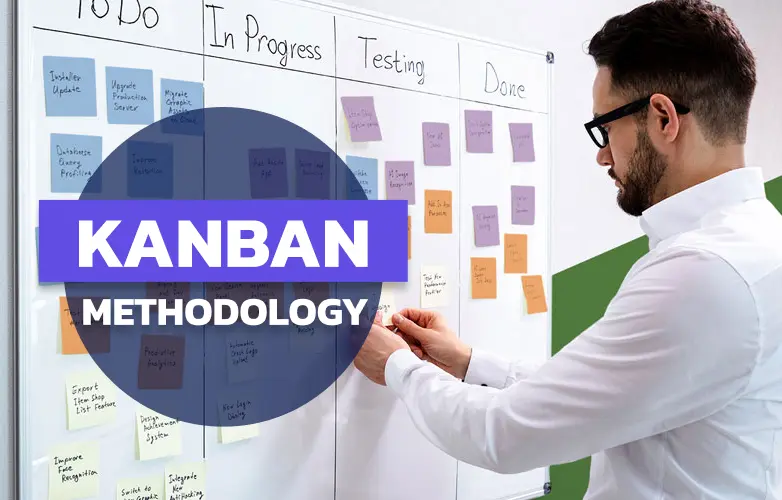Table of Contents
Just imagine: You’ve got this amazing project lined up with a top-notch team ready to roll and great expectations to meet.
And here lies the difference between success and otherwise: the budget. Every project manager faces the problem of on-the-dime tracking every dollar spent, forecasting expenses, and guaranteeing that he or she will not allow him- or herself to go wild about expenses outside of the budget.
Luckily, the reams of modern project budgeting software provide a vast selection of potent tools that make life in financial planning for projects less of a chore and more of a seamless experience.
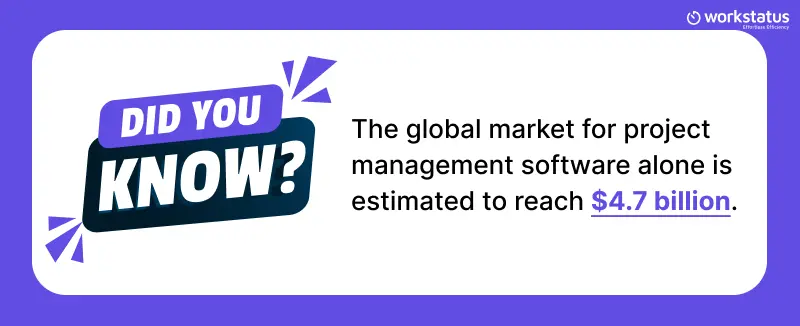 With the year 2025 in mind, these are the 7 best options for project budgeting software that should rest on your radar. More than just calculators, they bring with them every single asset you need to ensure the success of your project management.
With the year 2025 in mind, these are the 7 best options for project budgeting software that should rest on your radar. More than just calculators, they bring with them every single asset you need to ensure the success of your project management.
If you’re seeking reliable budget tracking software, these tools offer advanced capabilities to monitor expenses, forecast budgets, and maintain financial control.
So, let’s jump right into the tool set that would assist in ensuring the projects stay within budget in the forthcoming year!
7 Project Budgeting Software to Use in 2025
Here are the best 7 project budgeting software to look out for in 2025:
1. Workstatus
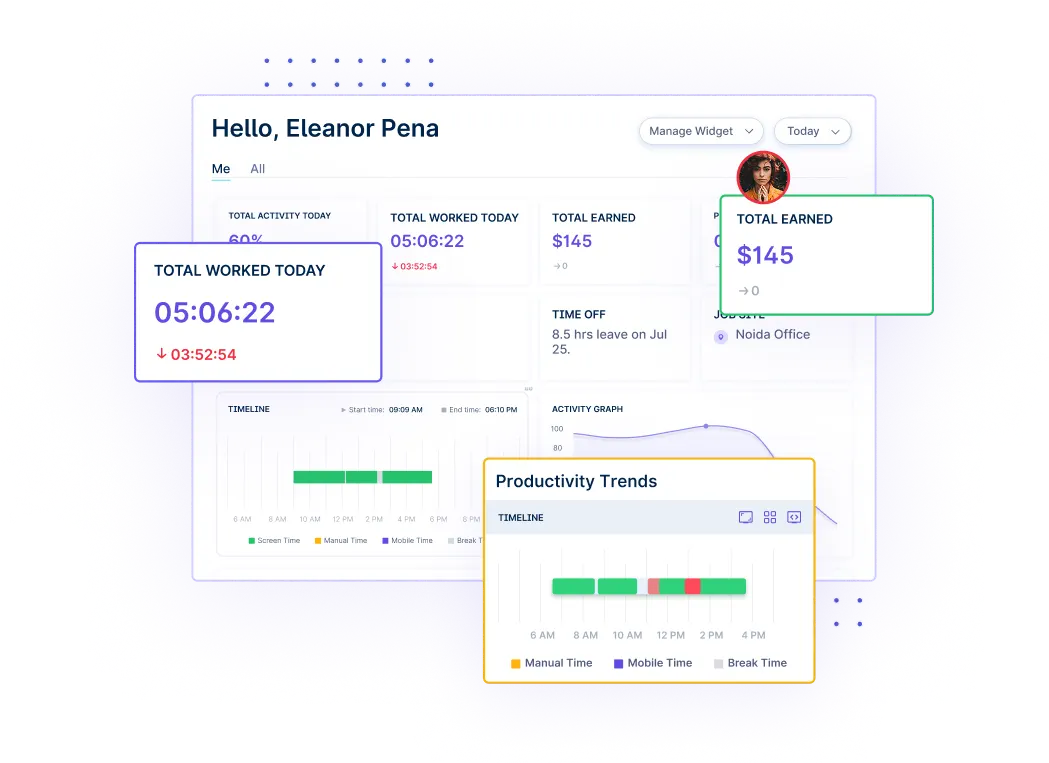 Workstatus is an all-in-one workforce management platform with strong time tracking, project management, and budgeting features designed to understand the overall project costs and resource allocation comprehensively.
Workstatus is an all-in-one workforce management platform with strong time tracking, project management, and budgeting features designed to understand the overall project costs and resource allocation comprehensively.
Feature: Real-time time tracking integrated with project budgets.
Benefits: Enables accurate labor cost tracking, improved project profitability analysis, and easier payroll processing.
Limitations: Primarily finds its niche in workforce management, and may not display the breadth of features associated with dedicated accounting software.
USP: Combines project budgeting software with complete workforce management in one friendly interface.
Pricing: Workstatus pricing plan starts at just $1.6 per user, with flexible custom plans available to fit businesses of all sizes.
2. Invoicera
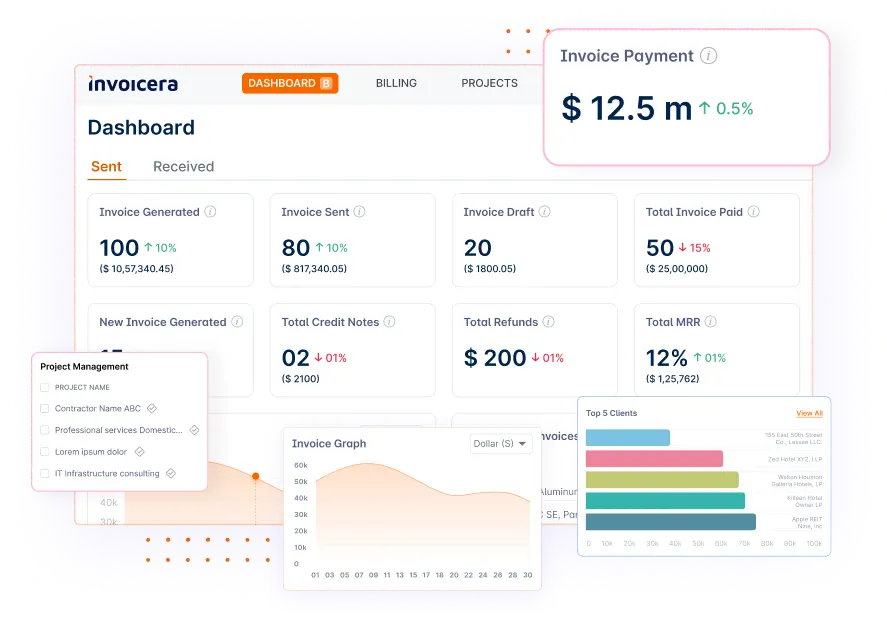 Invoicera is a cloud-based software for invoicing, financial management features, and project budgeting. Best for freelancers, small businesses, and agencies.
Invoicera is a cloud-based software for invoicing, financial management features, and project budgeting. Best for freelancers, small businesses, and agencies.
Feature: Recurring invoicing and automated reminders for unpaid payments.
Benefits: Streamline the invoicing process, ensure timely payments, and easily have an overview of project economics.
Limitations: Project budgeting shouldn’t go beyond other dedicated resource allocation tools.
USP: Strong emphasis on invoicing and payment management, perfect for businesses wanting to optimize the billing process.
3. Monday.com
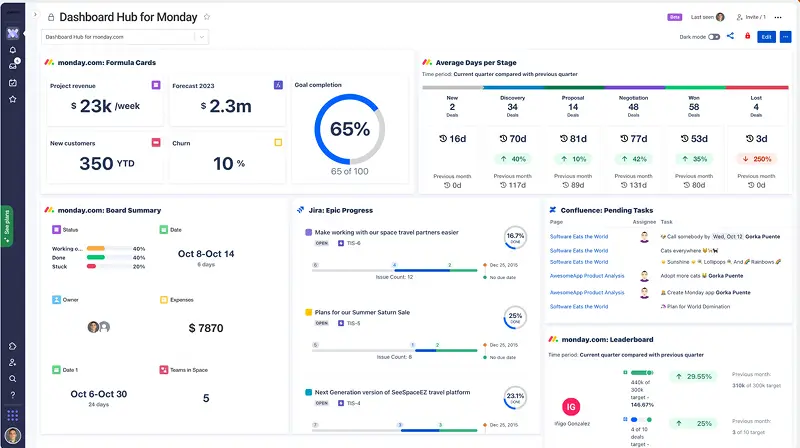 Monday.com is a flexible work management platform providing financial planning for projects, financial tracking, besides standard project management software capabilities.
Monday.com is a flexible work management platform providing financial planning for projects, financial tracking, besides standard project management software capabilities.
Feature: Customizable dashboards to visualize project budgets and progress.
Benefits: Enhanced project visibility, improved team collaboration, and better decision-making based on real-time data.
Limitations: High prices for large teams with complex needs since pricing depends on the number of users.
USP: A highly customizable and visually friendly interface that makes the entire process of managing projects and budgets a pleasurable experience in a cohesive environment.
4. Smartsheet
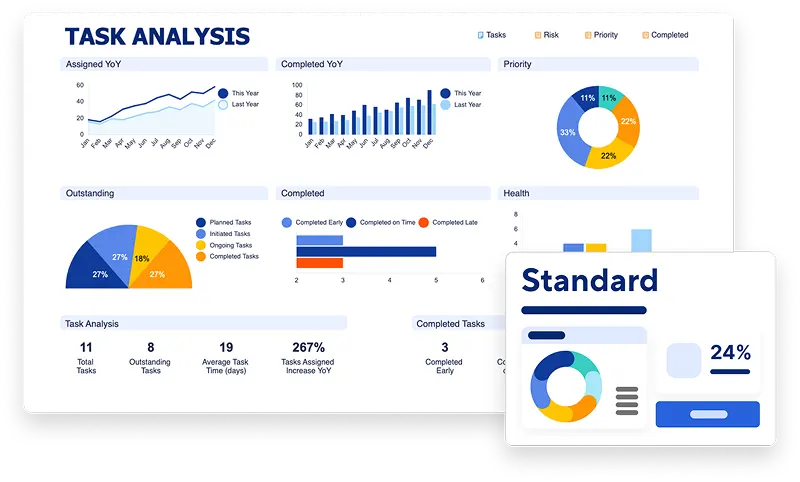 Smartsheet is a spreadsheet-like work management platform that offers features for project budgeting software, resource management, and team collaboration.
Smartsheet is a spreadsheet-like work management platform that offers features for project budgeting software, resource management, and team collaboration.
Feature: Formula-based budgeting and expenditure tracking.
Benefits: Intuitive spreadsheet interface with powerful calculation ability and easy integration with other MS and Google tools.
Limitations: May seem somewhat less user-friendly to those unfamiliar with spreadsheets.
USP: Combines the powers of a spreadsheet with the collaborative and automated elements promoted by a task management tool.
__________________________________________
Also read: Smartsheet Alternative
__________________________________________
5. ClickUp
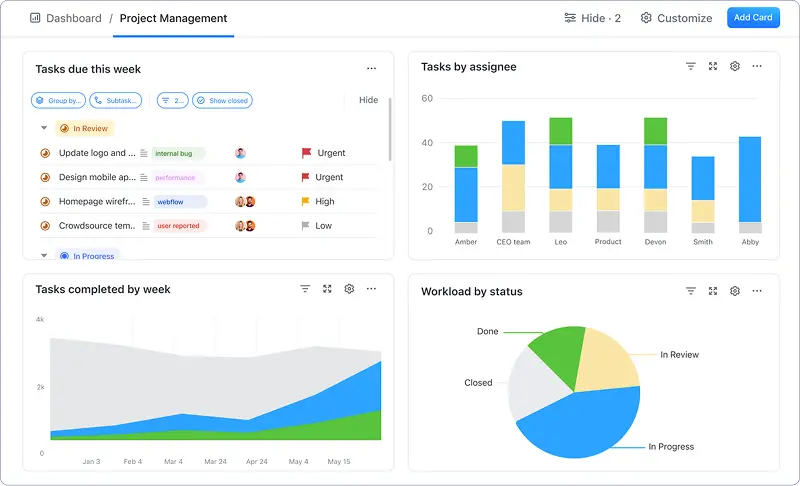 ClickUp is robustly customizable project management software that offers features such as budgeting, time tracking, and resource allocation tools.
ClickUp is robustly customizable project management software that offers features such as budgeting, time tracking, and resource allocation tools.
Feature: Task management and project-level budget tracking.
Benefits: Move toward granular control over project cost, optimal resource allocation, and improved profitability of projects.
Limitations: For many people, the number of features and a vast array of customization options may be somewhat overwhelming.
USP: Extremely flexible and customizable, applicable to all types of projects of any team size.
6. Asana
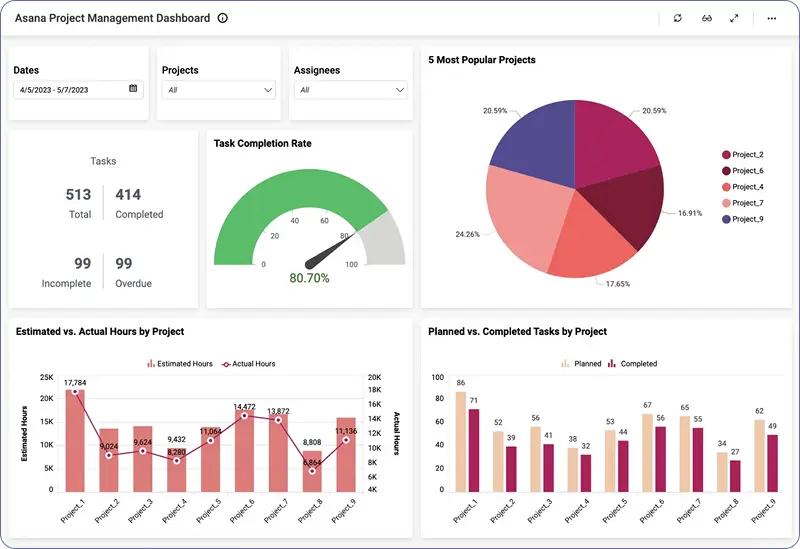 Asana is an extremely popular project management software that has its integration with several project budget management tools and financial tracking applications for a well-rounded view on project costs.
Asana is an extremely popular project management software that has its integration with several project budget management tools and financial tracking applications for a well-rounded view on project costs.
Feature: Third-party budgeting tools integration, such as Harvest or Everhour.
Benefits: Streamlined workflow in project management, improved team collaboration, and availability of an enormous range of capabilities through integrated budgeting.
Limitations: Requires the use of external tools to gain complete budgeting capabilities.
USP: Reliable project management and team collaboration focus with lots of integrations to enhance its functionality.
__________________________________________
Also read: Asana Alternative
__________________________________________
7. Wrike
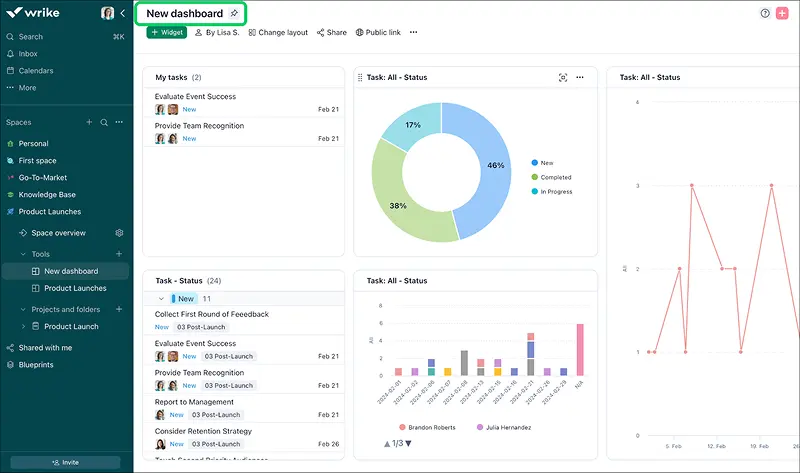 Wrike is an extensive best project management solution and collaboration that also features budgeting, resource management, and reporting.
Wrike is an extensive best project management solution and collaboration that also features budgeting, resource management, and reporting.
Feature: Project budget tracking software, resources allocation, and performance analytics.
Benefits: Better control of projects, better utilization of resources, and better-informed decisions based on real-time data.
Limitations: Can be complex to set up and configure, requiring some initial investment in training and implementation.
USP: The best project management solution and collaboration features in one solution through sophisticated budget planning tools and resource allocation tools, capable of handling complex projects with large staff.
Choosing the appropriate piece of project budgeting software relies almost entirely on your organization, its size, and project complexity. Using free trials or demos to test products is a logical idea.
What to Look for in a Project Budget Software?
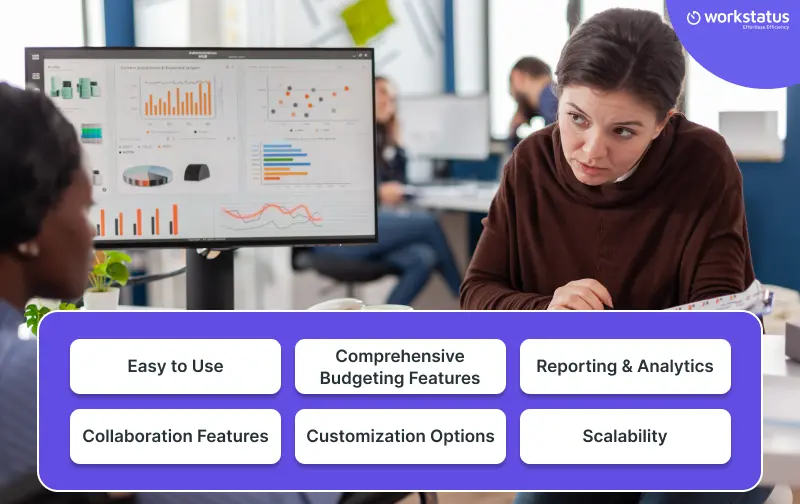 Choosing the right project budgeting software is essential for accurate planning, effective cost control, and overall financial success—here’s what to look for.
Choosing the right project budgeting software is essential for accurate planning, effective cost control, and overall financial success—here’s what to look for.
Pay attention to these so that you can settle on the budget planning tools that fit just right for you:
- Easy to Use: Seriously! Nobody wants complicated software. Look for a clean, intuitive interface that your team can actually use.
- Comprehensive Budgeting Features: Does it handle cost estimation, tracking, forecasting, and analysis? Can you break down the budget into categories? Versatility is key.
- Reporting & Analytics: Can you make sense of the data? Look for detailed reports and visualizations to track progress, identify problems, and make smart decisions.
- Collaboration Features: Financial planning for projects is a team effort! Shared budgets, comments, and role-based permissions are crucial.
- Customization Options: Can you customize categories, reports, and workflows to fit your specific needs?
- Scalability: Will it still work as you grow? Choose a solution that can scale with you.
So, keep these in mind, and you’ll find the perfect project management software in no time!
How Does Budgeting Software Work?
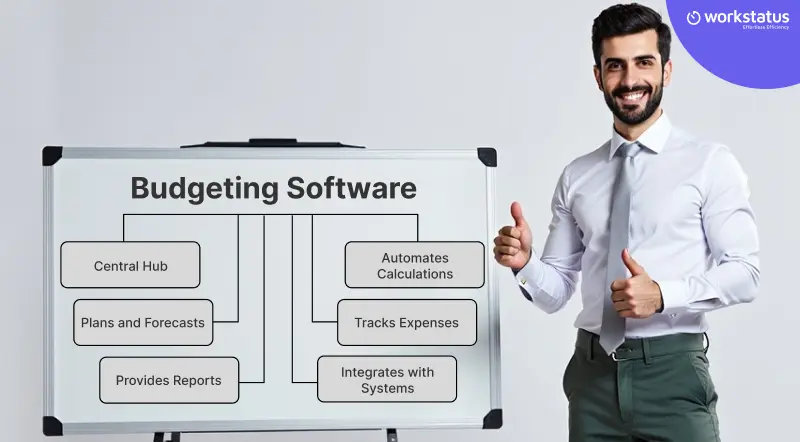 Now, let’s see how exactly project budgeting software works. Actually, it isn’t like magic, although sometimes it might feel like it is! It is basically the organization, automation, and analysis of any finances involved in a project.
Now, let’s see how exactly project budgeting software works. Actually, it isn’t like magic, although sometimes it might feel like it is! It is basically the organization, automation, and analysis of any finances involved in a project.
Think of it this way:
- Central Hub: It’s the single source for all your financial data – estimated costs, actual expenses, invoices, timesheet, everything!
- Automates Calculations: Forget spreadsheets! It automates math, forecasts costs, and saves time while reducing errors.
- Plans and Forecasts: Create a budget based on your project, then use data to forecast costs and identify risks.
- Tracks Expenses: Track actual expenses against your budget in real-time. It shows variances and alerts you to overspending.
- Provides Reports: Generates reports on where money’s going and how you’re tracking. Customize them to show what matters to you.
- Integrates with Systems: Works with your accounting, project management software, and CRM to avoid manual entry.
Basically, it automates tedious tasks, giving you a real-time view to make smart decisions and stay on track. It’s like a financial co-pilot for financial planning for projects!
Tips to Use Your Budgeting App Effectively
You have just picked out your shiny new project budgeting software—cool! But just having it is not enough; you need to know how to run it so that you can maximize its potential. Here are few tips to use your budget planning tools to its fullest:
Set It Up Right From the Start
Take the time to set the program up correctly right from the beginning. Clarify the scope of your project, make good budget categories, and set your report preferences. A sound foundation will make it easier down the road.
Involve Your Team
Financial planning for projects is not a solo act! Get your team involved in the process. Encourage them to accurately track their time and expenses and solicit their input on cost estimates. The more buy-in you have, the more accurate your information will be.
Track Everything Diligently
Ensure you don’t incur unnecessary costs in the process! Introduce the habit of reviewing your software daily and double-checking that you log every single cost and expense within that time. That is but one way of seeing your budget in real-time and ensuring that you catch overspending as soon as possible.
Regularly Review Your Budget
Give yourself enough time each week (or month) to review your budgets and progress. Compare your spending with your planned spending and see if and why there are discrepancies.
Use the Reporting Features
Don’t just input data and forget about it! Use the reporting features to generate insightful reports and visualizations. This will help you identify trends, spot potential problems, and make data-driven decisions.
Adjust as Needed
Budgets are not made in stone! Things will change in the project as time goes on. Gear up to modify the budget whenever you foresee unavoidable changes due to new happenings or events.
Don’t Be Afraid to Experiment
Budget planning tools should have many features and personalization options. You can try varied settings and configurations to find a good fit for you and your crew.
Use these tips and transform your project management software into a great tool for managing your project finances successfully.
Closing Thoughts
So, that’s a look at the project budgeting software landscape and some top choices for 2025. Choosing the “best” one depends on your projects, team, and budget. Besides, tools like Workstatus, which has a reliable project budgeting and workforce management combo, are also available.
Try out free trials, watch demos, and get your team involved. With the right financial planning for projects tool, you’ll tackle projects confidently and stay in control of your money.
FAQs
Ques: What features should a good project budgeting software have?
Ans: A good project budgeting software should provide expense tracking, financial forecasting, cost allocation, real-time reporting, collaborative features, and integration with popular accounting tools.
Ques: Which project budgeting software is best for small businesses?
Ans: Workstatus and Invoicera are the best small business project budgeting software for both affordable and pretty intuitive budgeting tools.
Ques: How does project budgeting software help to prevent budget overruns?
Ans: These tools provide a real-time cost tracking and automatic alerting mechanism, giving a detailed report that helps a team to avoid over budget and expenses.
Ques: How do I go about picking the right project budgeting software for my team?
Ans: Before making the final decision, you should consider things such as team size, budget, desired features, ease of use, and integration capabilities while selecting a tool for your team.
Ques: Is project budgeting software secure enough to handle finances?
Ans: Most reputable project budgeting software ensures the protection of data and information in their systems by means of encryption, role-based access, and other continuity measures or standards.



